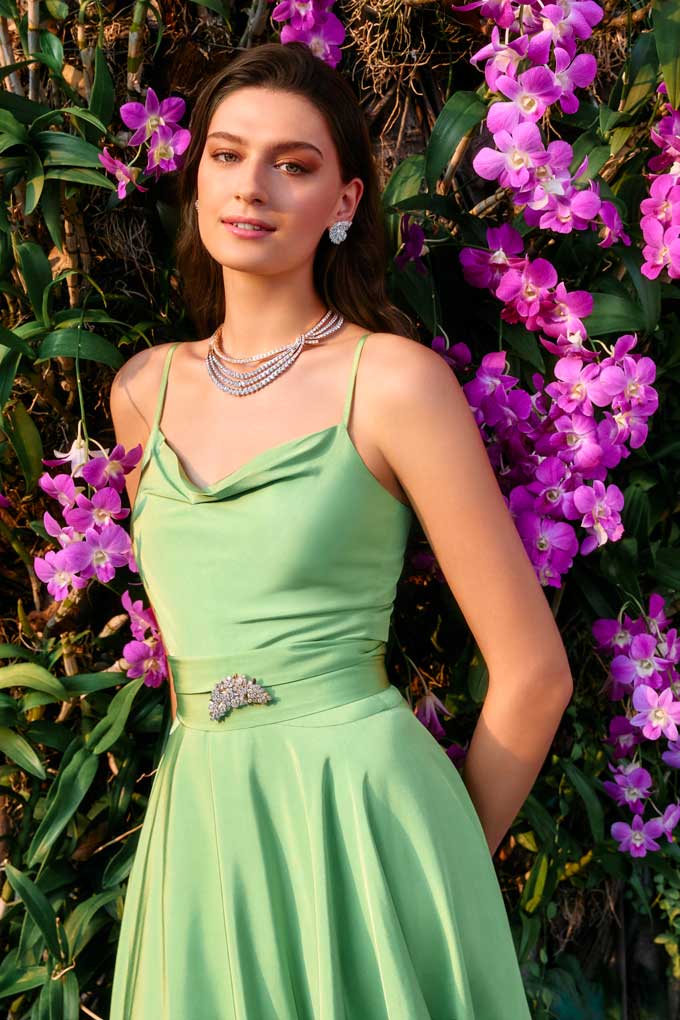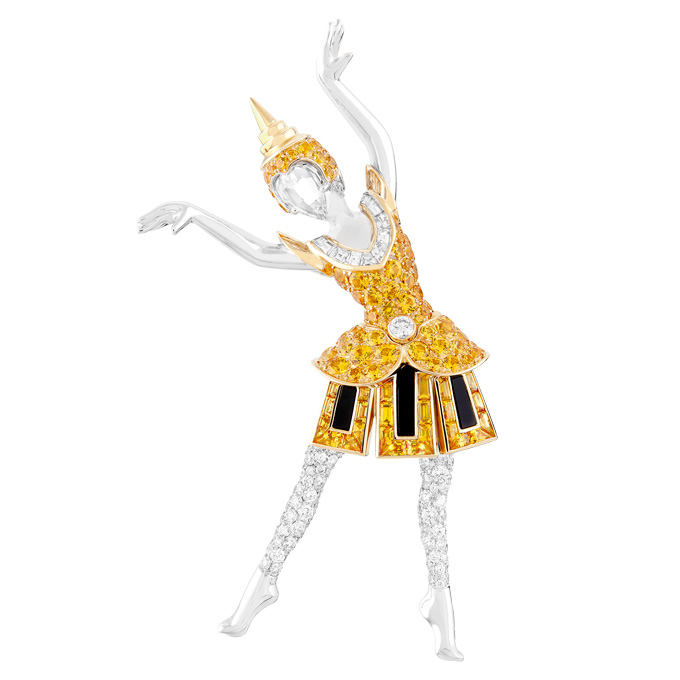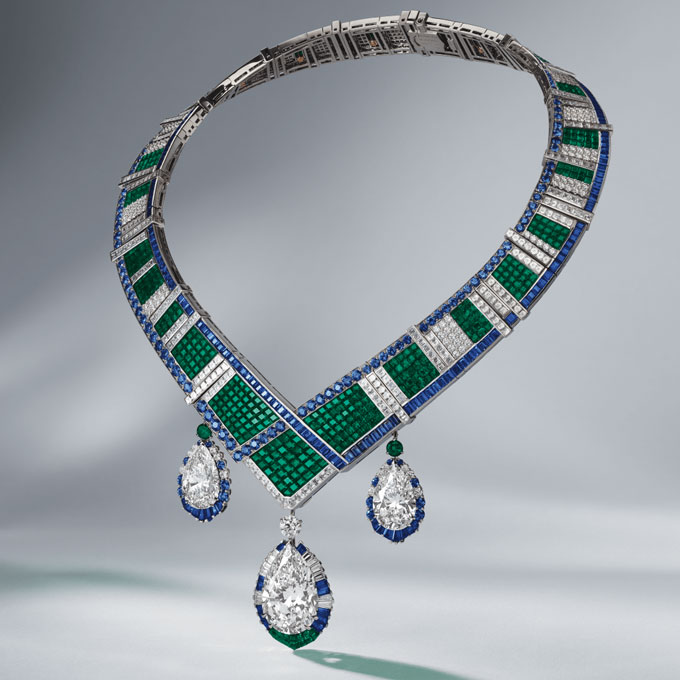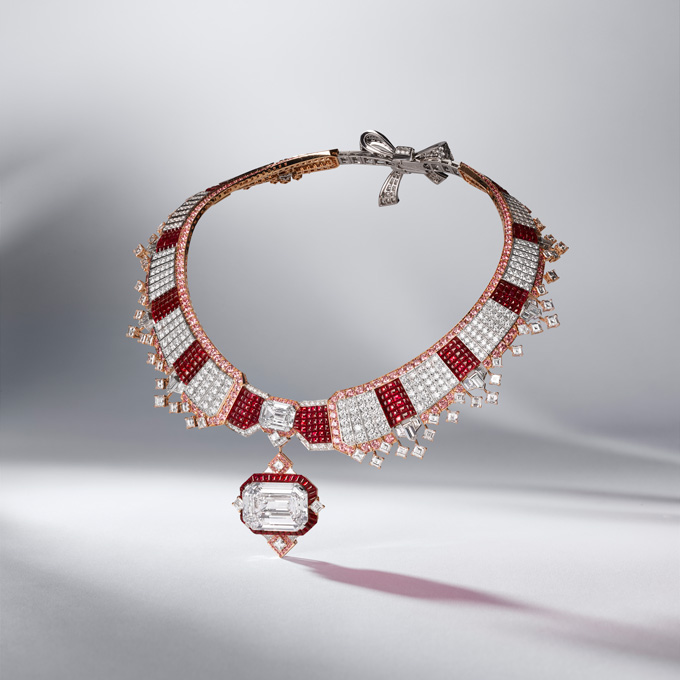The Alhambra. The Zip necklace. The ballerina brooch. These creations need no introduction and are perpetually desired as the most collectible jewellery of Van Cleef & Arpels. But this stylistic ingenuity extends far beyond its iconic collections, and can also be seen in Van Cleef & Arpels diamond high jewellery creations.
Whether it’s a necklace of bows and ribbons, delicate floret rings, or a simple but distinctive botanical-inspired brooch, the trained eye could immediately identify quintessential hallmarks of the maison’s savoir-faire.

Mystery-set precious stones are a sure giveaway. Diamonds that flow uninterrupted alongside the gold mounting they offer the illusion of softness, fluidity, and even malleability. This was the single most important message behind the latest Van Cleef & Arpels’ diamond high jewellery collection, Legend of Diamonds.
“We launch a high jewellery collection roughly once a year, and it alternates between the use of stones and a thematic inspiration,” says Nicolas Luchsinger, Van Cleef & Arpels’ president for Asia Pacific. “We’ve dedicated entire collections to emeralds and rubies before, and we’ve also worked on great stories such as Romeo and Juliet. With Legend of Diamonds, we’ve returned to diamonds and adopted a more classical style so as to really highlight the stones.”

Speaking to Vogue Singapore in Bangkok where the maison staged its regional high jewellery showcase, Luchsinger was especially thrilled by a special ballerina brooch designed in the style of a Thai traditional dancer.
Incidentally, he had also uncovered a vintage Thai ballerina brooch from the maison’s Heritage collection just in time for this exhibition. “We thought it was very interesting to see that Thailand has inspired a ballerina clip as early as in the 1950s,” he remarks.

One signature design element of ballerina brooches by Van Cleef & Arpels is the use of rose-cut diamonds for the ballerina’s face. With fewer facets and an open culet, there is a poetic quality to rose-cut diamonds that lends a deeply expressive note to these clips.
But it had been the maison’s couture-inspired creations that ultimately stole the show this time, especially those featuring important diamonds such as the Chevron Mystérieux necklace with its three glorious pear-cut diamonds yielded from the maison’s extraordinary 910-carat Lesotho Legend, plus mystery-set emeralds and blue sapphires.


“What better technique to use than the mystery setting because it is as recognisable as a Van Cleef & Arpels ballerina, as a Van Cleef & Arpels Zip,” Luchsinger adds. “When you wear mystery setting pieces, people immediately know is it Van Cleef & Arpels.”
Also taking stage centre are the Collerette Mystérieuse necklace and ring set featuring two emerald-cut diamonds and traditional and individual mystery set rubies, and the Entrelàcs Mystérieux bracelet combining diamonds and blue sapphires with two identical 10.88-carat Asscher cut diamonds.

Luchsinger muses, “For diamond necklaces, there is nothing better than couture to give you a jewel that works very well around the neck. It allows the design to be free-flowing rather than overly formal or symmetrical. And what better motif to break the symmetry than the bow, because you be fully creative with the piece?”
Legend of Diamonds’ second chapter was precisely as he describes. Ribbons of gold and gemstones flow with a lightness, a dreaminess you could only find with fine silk or lace. Bows of such softness that teases you to reach out and touch it. Only the finest jewellers and craftsmen could coax such sensuality out of diamonds and gold.

“We also have to remember that with ribbons, there is a connection to the idea of love as well,” notes Luchsinger. “This goes back to an historical tradition when a lady would remember the love of her life by tying a bow with her handkerchief. This connection to themes of love prevails in our high jewellery collection through different interpretations of ribbons and bows.”
And prevail it must, for love has always been one of Van Cleef & Arpels’ most important design pillars because it goes right back to the origins of the maison, when Alfred Van Cleef met—and fell in love—with Estelle Arpels.





